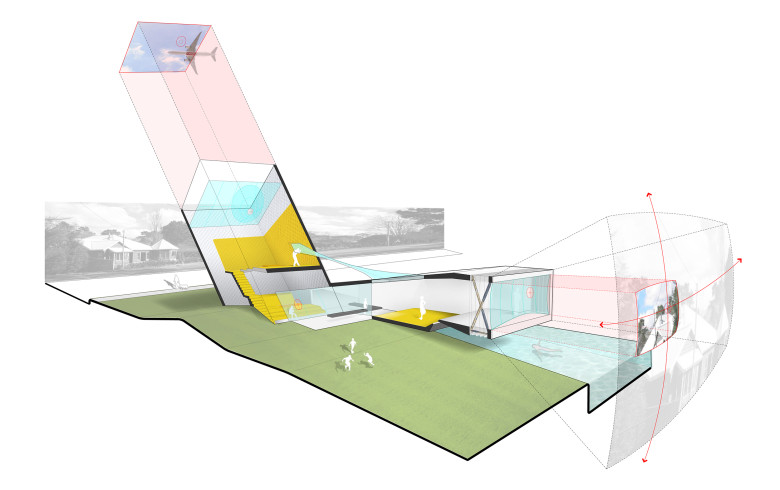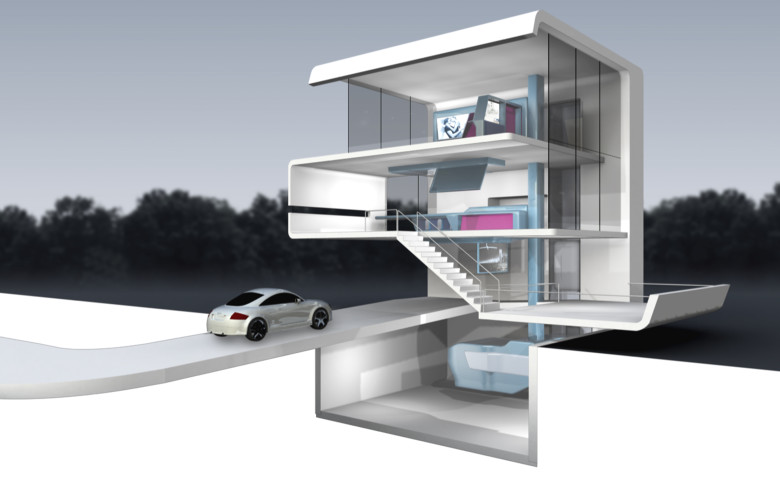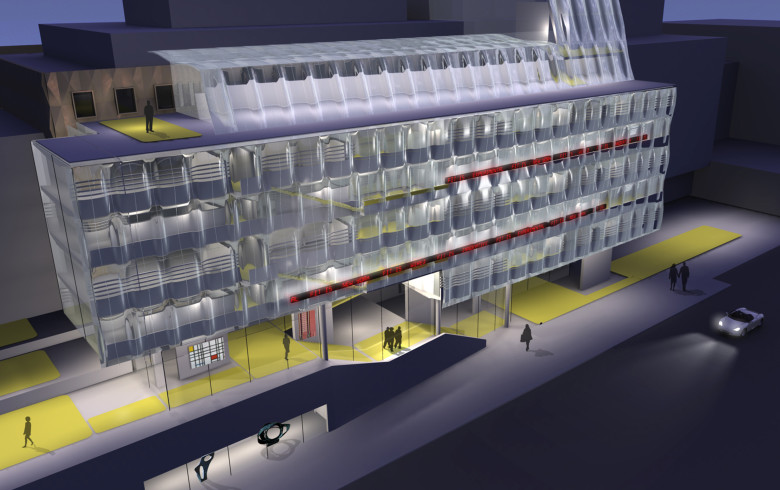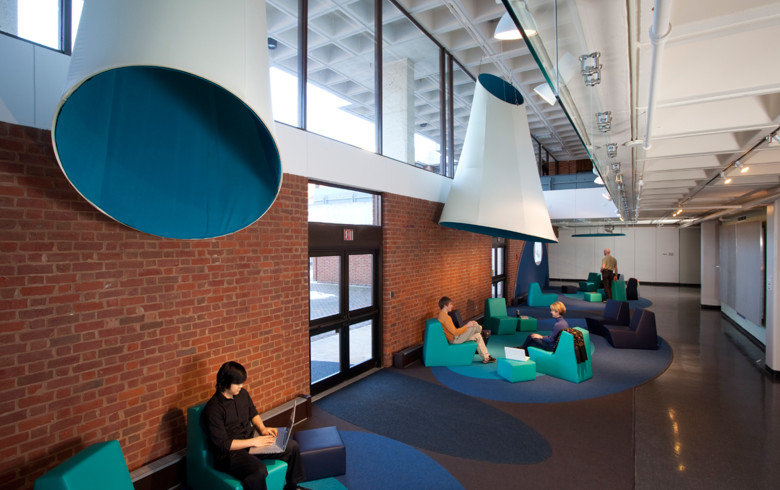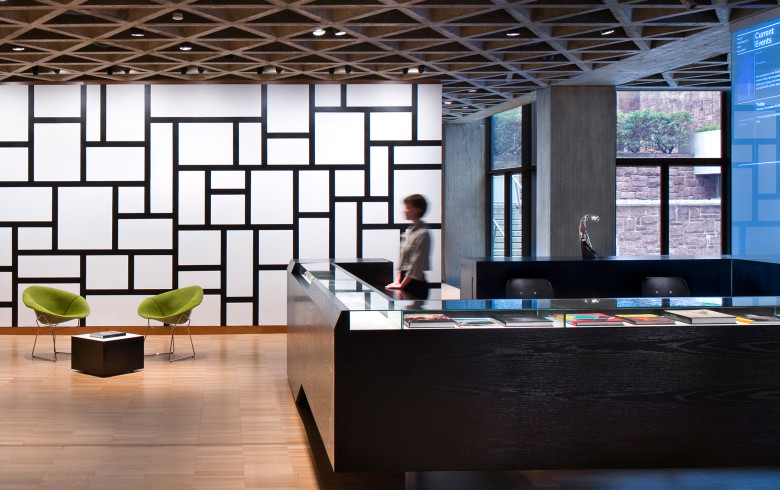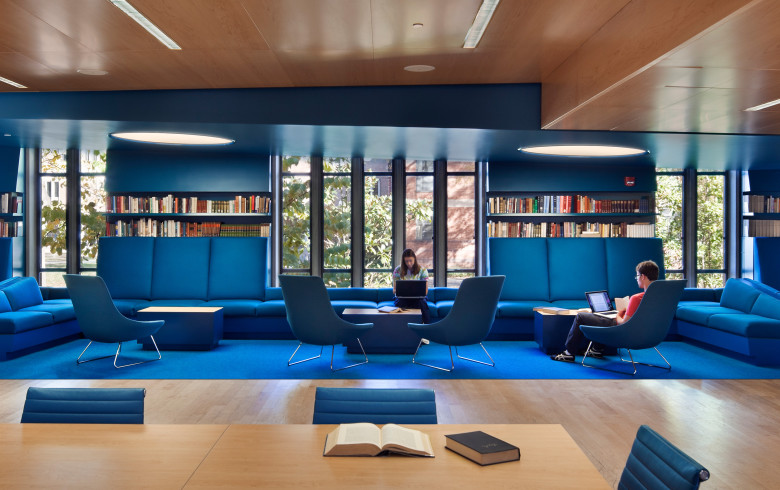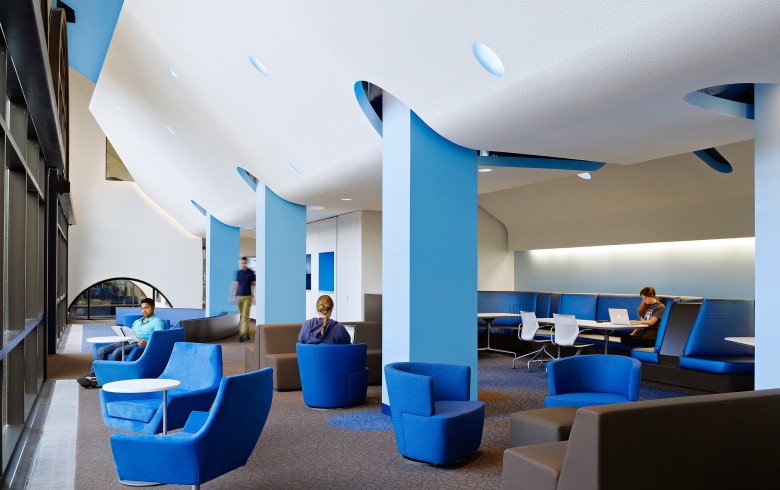Digital Technologies

Architects have mined the potential of digital technologies to revolutionize our discipline making possible new formal vocabularies, new modes of representation and new fabrication techniques. At JSA, we have become interested in another aspect of the digital revolution: the profound but often overlooked impact of information technologies on the spaces of our daily lives—places like homes, offices, libraries and museums.
Naysayers bemoan the impact of two generations of digital devices. They claim that sitting motionless in ergonomically designed chairs, desktop computers cause us to lose touch with our physical selves and our surroundings. With only our fingers moving, we fix our gaze on a glowing monitor that beacons us to visually cross the threshold defined by the frame of the computer screen and enter cyber space.
According to some critics, a second generation of portable devices—smart phones and tablets–have made matters even worse. They have transformed us into distracted zombies who roam the world isolated in media bubbles indifferent to the sights and sounds of place. But at JSA, we have become cautiously optimistic about the spatial and sensory potential of mobile instruments: these extensions of our limbs are devices that we can carry with us indoors and outdoors. Combining sound and image, they increasingly promise to conjoin two senses—vision and hearing– and two places– actual and virtual space.
In both teaching and practice, JSA has been pursuing this research in speculative projects conceived for museum exhibitions, institutional commissions and graduate studios and seminars at Yale School of Architecture. All of these venues explore ways digital technologies can be deployed in everyday site-specific contexts to instigate meaningful embodied interactions in both private and public space.
